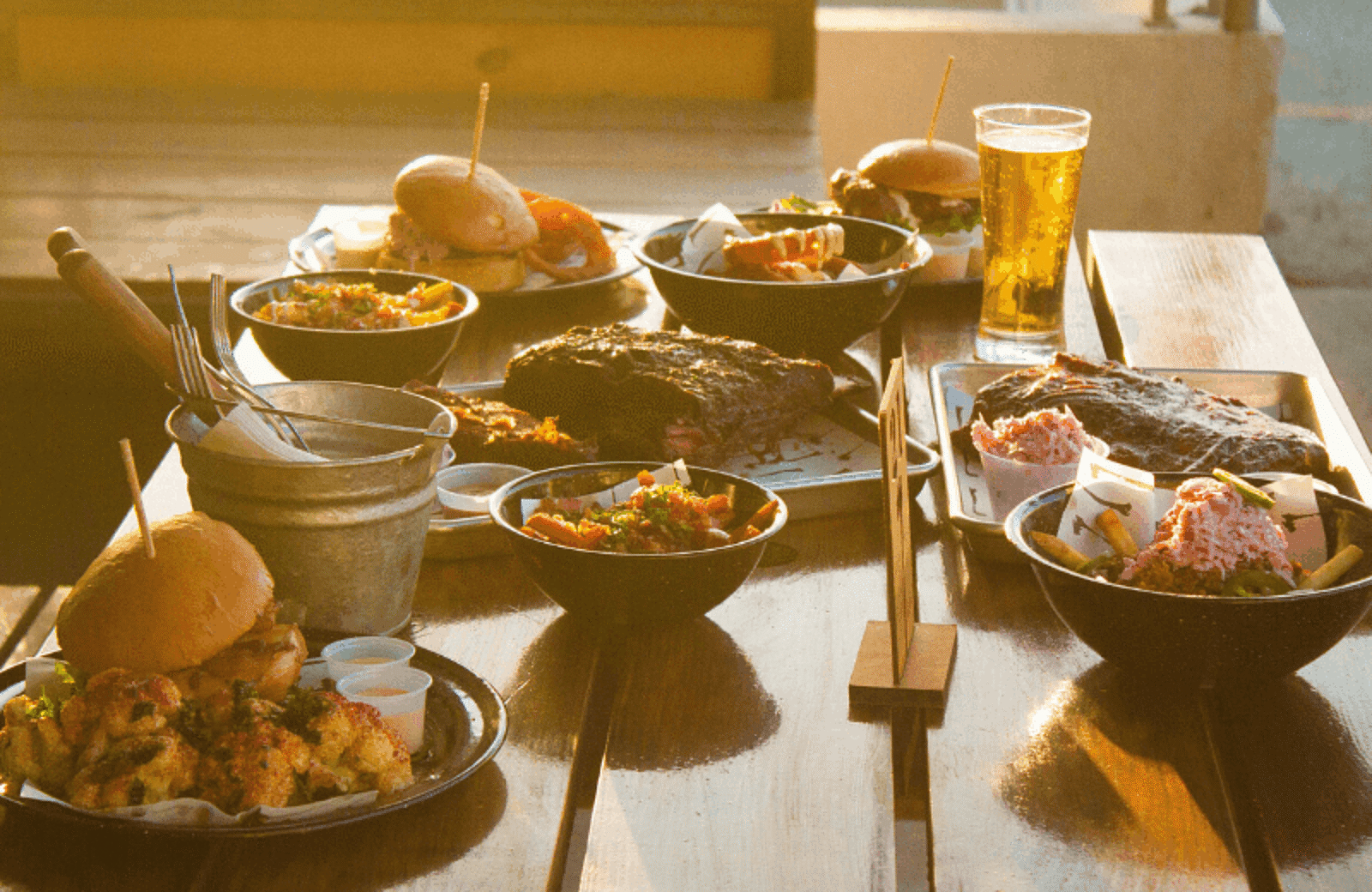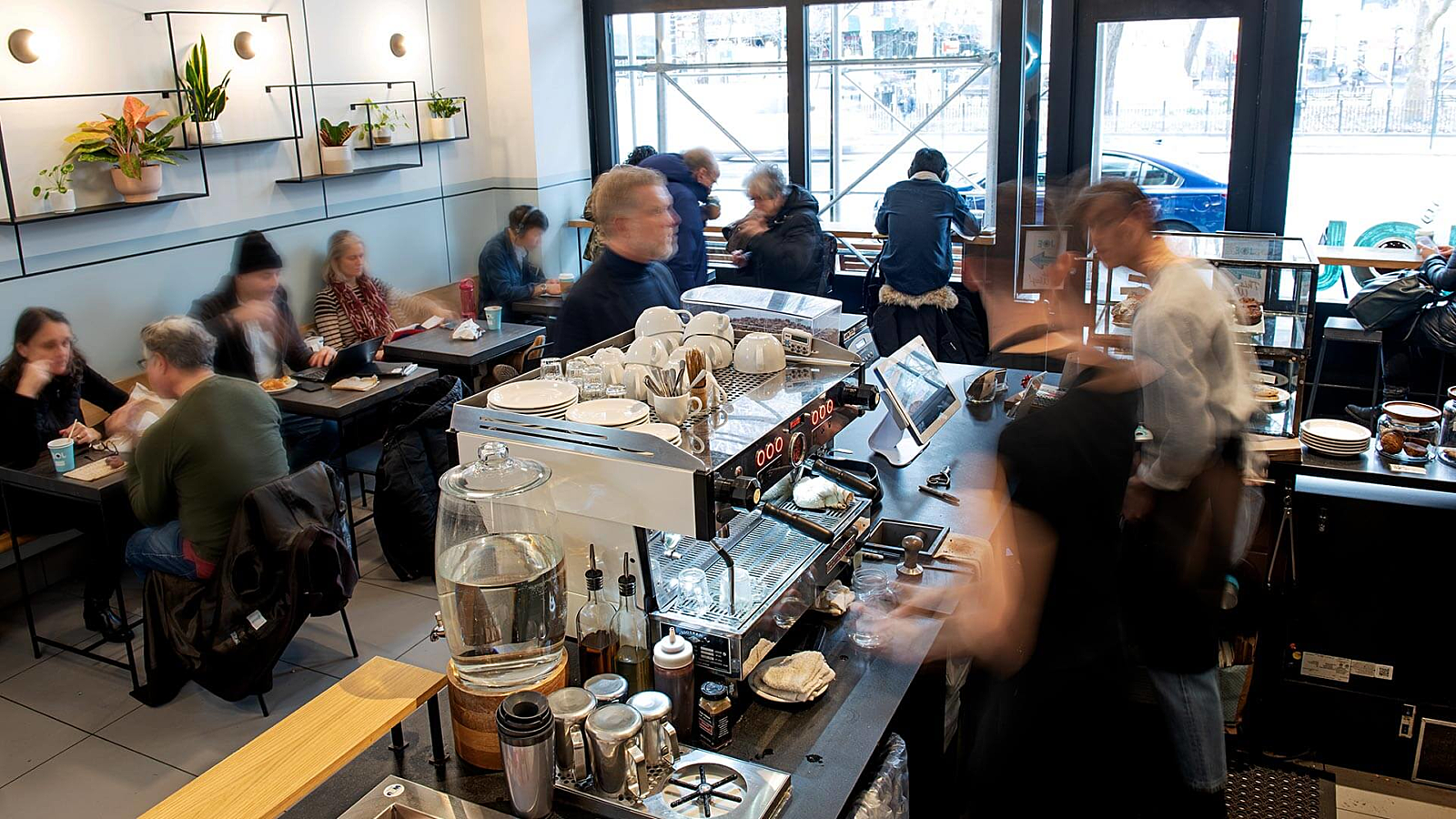
60 Restaurant Industry Statistics and Trends for 2024
This list includes all the restaurant management statistics and trends every restaurant owner/operator should know.

Allie Van DuyneAuthor


Restaurant Operator Insights Report
See insights from real restaurant operators which can help you benchmark your current and planned restaurant technology stack against your peers as we head into 2024 and beyond.
Get free downloadWhat makes the restaurant industry so interesting?
In recent years, we've witnessed a huge spike in online ordering, a new focus on reducing food waste, the adoption of server handhelds, the implementation of robots in restaurants, and a host of food trends that have surged across social media.
2022 is here, and it's already been a whirlwind. If things have gotten a little messy in your restaurant office – it happens! – take a moment to reassess and make sure you're still on course. We've got a few resources to help you with that.
Restaurant Management, Planning, and Budgeting Resources
- Restaurant Business Plan Template
- Restaurant Marketing Plan
- Restaurant Staff Scheduling Template
- How to Do Payroll for Restaurants
- How to Measure and Increase Restaurant Sales
What are the trends in the restaurant industry?
Restaurant industry trends can help paint a picture for how restaurant owners should plan and prepare for budget, staffing and training, and technology. For example, in 2021, online ordering and delivery are seeing massive spikes. Restaurateurs with knowledge of trends and statistics know that purchasing the necessary hardware and software to support online order and delivery, touchless menus, and other safety measures will succeed over their competition.
Restaurant industry trends include statistics and data like:
How many people work in the restaurant industry?
What percentage of workers are in the restaurant industry?
How many customers do restaurants have per day? Per month? Per year?
We've also compiled a list of 60 restaurant statistics from reports, studies, and articles across the internet that cover the state of the restaurant industry and point toward areas of opportunity for hungry owners and operators looking to stand out for the rest of 2022 and beyond.
Restaurant Operator Insights Report
See insights from real restaurant operators which can help you benchmark your current and planned restaurant technology stack against your peers as we head into 2024 and beyond.

Restaurant Economy Statistics
These statistics outline trends in restaurants from a bigger picture perspective, from restaurant sales, dining trends, how much consumers spend on food, and more.
A whopping 45% of diners go out to eat multiple times a week, with another 20% going out to eat once a week. (Source)
The Restaurant Performance Index (RPI) sits at 101.6 as of May 2019. Anything over 100 is considered a time of growth for restaurants. (Source)
Projected annual sales in the restaurant industry are $863 billion – that’s 4% of the country’s gross domestic product. (Source)
In 1955, the restaurant industry comprised 25% of the family food dollar. In 2019, that number rose to 51%. (Source)
American consumers spend 33% of their income on housing, 15.8% on transportation, and 12.6% on food. (Source)
1 in 3 Americans have their first job experience in restaurants - 6 in 10 adults have worked in restaurants at some point. (Source)
52% of restaurant professionals named high operating and food costs as a top challenge. (Source)
Restaurant Employment Statistics
These trends explore restaurant employees, hiring trends for restaurant staff, restaurant employee retention statistics, and more to help your restaurant stay competitive.
More than 9 out of 10 restaurants have fewer than 50 employees. (Source)
51% of restaurant operators name staffing as a top challenge to success, and 35% say training staff is a top challenge. (Source)
There are currently 15.3 million employees in the restaurant industry. (Source)
There will be 16.9 million jobs in the restaurant industry by 2029. (Source)
Turnover in the restaurant industry is at an all time high, at 75%. (Source)
Restaurants employ more women and minority managers than any other industry. (Source)
It can cost $2000 to hire and train a new staff member. (Source)
It can cost up to $15000 for a new manager – so it’s no wonder restaurant operators are so concerned about turnover. (Source)
The United States unemployment rate, as of June 2019, is extremely low, at 3.7%. (Source)
As a result of minimum wage increases, 47% of restaurant operators admitted they have scheduled employees for fewer hours each week in the past twelve months. (Source)
For the same reason, 16% of restaurant operators have had to halt hiring efforts to lower labor costs. (Source)
In the past ten years, between 1.7 and 1.8 million Bachelor's degrees are awarded annually, limiting the amount of people who are willing to work in low-paying restaurant jobs. (Source)
68% of restaurants offer an employee handbook to new hires. (Source)
- 32% of restaurants provide sexual harassment training to their staff. (Source)
- 46% of restaurants offer a mentor program. (Source)
53% of restaurants offer food safety and alcohol certification training. (Source)
Restaurant Promotion Statistics
These restaurant industry statistics can help guide your social media and promotion strategy and attract new customers. Learn how your fellow restaurant owners are using marketing and social media to grow their business.
67% of restaurants plan to pay for social media ads in 2019. (Source)
53% plan to invest in being a community event or charity sponsor. (Source)
When it comes to social media, restaurants are most likely to use Facebook (91% of restaurants) and Instagram (78%). Instagram has skyrocketed in popularity for restaurant promotion since last year, when only 24% reported using it. (Source)
Restaurants are least likely to use YouTube for promotions (only 14% of restaurants report using it). (Source)
When dealing with negative online reviews or in-person feedback, 23% of restaurateurs reach out directly to the person who gave the feedback. 15% put the feedback to use when giving performance reviews to front-of-house or back-of-house staff. Some restaurant professionals — 2% — admitted to never taking action when receiving negative guest feedback. (Source)
Restaurant Sales Statistics
These statistics will show trends in restaurant sales, how restaurant owners evaluate their sales reports, and overall profit trends in the restaurant industry.
As a result of minimum wage increases, 65% of restaurants have increased menu prices. (Source)
68% of restaurant professionals review sales reports on a regular basis, 45% regularly review labor reports, and 32% regularly review menu reports – and 17% admitted that they don’t check any of these regularly. (Source)
91% of restaurateurs expect profits to increase in 2019. (Source)
If they had extra money on hand, 47% of restaurateurs would repair or update their equipment. (Source)
Guide to the Restaurant Guest
Learn how to navigate changing guest expectations during and after the COVID-19 health crisis.

Restaurant Consumer Statistics
Restaurant consumers have changed their habits in 2020. Here’s how people are spending money at restaurants and consumer trends for the restaurant industry.
Pent-up demand for restaurants remains high, with 39% of adults not eating on premises at restaurants as often as they would like. (Source)
78% of millennials say they would rather spend money on an experience, such as a restaurant or other activity, compared to purchasing an item from a store. (Source)
If offered, 41% of consumers would buy a make-at-home meal kit from their favorite restaurant. (Source)
72% of diners ranked high quality food as the top factor that goes into choosing a restaurant to visit. Surprisingly, only 48% said value was their number-one factor. (Source)
When placing an online order, a patron is more likely to use a restaurant's website than a third-party site like Grubhub. (Source)
When receiving an online order, guests ranked speed as the most important, followed by value, and then the quality of the food. (Source)
35% of diners said they are influenced by online reviews when choosing a restaurant. (Source)
Restaurant Payment Statistics
Restaurant payment methods have changed more in the past year than they ever have. Here are the trends reported by restaurants and restaurant goers surrounding restaurant payment methods and technology.
54% of millennials say a self-ordering kiosk improves the guest experience. (Source)
When paying for a low-ticket item (e.g. coffee), 62% of guests opt to use their credit or debit card.(Source)
When paying for a high-ticket item (e.g. fancy dinner), 88% of guests pay with their card. (Source)
4% of restaurants offer payment through Venmo. (Source)
Only 31% of restaurants offer mobile pay. (Source)
50% of people still want printed receipts, but 36% are happy with digital receipts – and 14% don’t want a receipt at all. (Source)
Restaurant Food Statistics
Restaurant food statistics include ideas for how much variety your menu should have, what diners are looking for, and trends in food items and menus.
31% of restaurateurs update their menu on a monthly basis. 24% do it seasonally. (Source)
61% of diners say they are more likely to eat healthy at a restaurant than they were two years ago. (Source)
To reduce food waste, 28% of restaurants repurpose food trimmings, 26% offer varied portion sizes, and 25% compost. (Source)
51% of consumers say they are more likely to visit a restaurant that offers environmentally-friendly food items. (Source)
Diners love breakfast all day - 55% say they’d order breakfast items at any time if they were offered. (Source)
Current food trends include local sourcing, zero-waste cooking, fresh produce, and healthy kids meals, and global flavors. (Source)
Restaurant Technology Statistics
Restaurant technology trends include statistics on POS software, payment processing, guest interaction tools and feedback tools, and what restaurant owners are looking for in technology products.
After POS technology and payment processing, the most popular back-office technologies were accounting software (52%, up from 31% in 2018) and payroll software (50%, up from 28% in 2018). (Source)
To seek out guest feedback, 29% of restaurateurs use manual comment cards, another 31% ask for feedback on their printed receipts, and 25% use a rating scale in digital receipts. (Source)
The most important technology features for guests are online reservations and free wifi. (Source)
73% of diners agree that restaurant technology improves their guest experience. (Source)
95% of restaurateurs agree that restaurant technology improves their business efficiency. (Source)
The top features restaurateurs are looking for in a restaurant POS upgrade are ease of use, depth of reporting, and inventory reporting. (Source)
Restaurateurs say credit card processing, accounting, and inventory are the most important integrations to their restaurant POS. (Source)
61% of diners agree that server handheld tablets improve their guest experience. (Source)
Many of the above statistics came from our Restaurant Success Industry Report.
Related Restaurant Resources
Is this article helpful?
DISCLAIMER: This information is provided for general informational purposes only, and publication does not constitute an endorsement. Toast does not warrant the accuracy or completeness of any information, text, graphics, links, or other items contained within this content. Toast does not guarantee you will achieve any specific results if you follow any advice herein. It may be advisable for you to consult with a professional such as a lawyer, accountant, or business advisor for advice specific to your situation.
Read More
Subscribe to On the Line
Sign up to get industry intel, advice, tools, and honest takes from real people tackling their restaurants’ greatest challenges.


